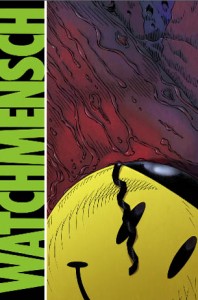Just completed our first advertising campaign this weekend, and definitely learned a lot. Started on the day after Thanksgiving, and ran for a little more than a week.
We used Project Wonderful, which seemed like a good choice due to its large number of webcomic publishers. I figured we’d reach people who read comics, and were especially used to reading them on a screen. What I didn’t know was how many of these eyeballs also had iPhones. We were able to purchase over three million impressions to this audience, and got well over a thousand click-throughs. This did result in a small increase in sales over the campaign on both apps I promoted (iBuddha and Watchmensch).
I haven’t calculated the exact average cost per click yet, but depending on the ad, the CPC ranged from .02 per click to .18 per click. This is substantially lower than the CPC for some other ad networks. Since a click is not necessarily an order, you want to make sure you aren’t paying more for the traffic than you stand to gain in sales. This is a tough call for a 99 cent iPhone app, and indeed we didn’t come even close to seeing an increase in sales that justified the ad expense.
A few things to note:
- If you are using Paypal to pay for your ads, be sure you aren’t just sending from a bank account, link to your credit card. Otherwise you will need to wait for the e-check to clear, typically 4 or 5 days.
- When selecting an advertising network, be very mindful of which publishers are showing your ad, and what their interests are. Project Wonderful is an excellent place to promote your webcomic, but doesn’t have as strong a presence for music, politics, media, or other subjects. Before you buy, take a look at which sites best suit your ads and what is advertising there now.
- A bigger ad on a cheaper site will often get you clicks at a cheaper cost than a small ad on a high-traffic site. Keep an eye on the actual Cost Per Click you are getting on an ad, and adjust the campaign as you go along.

125 by 125 pixels is a pretty popular size, I went for the strongest visual from the bigger ad and the message from the smaller ad. I thought the three sizes I made worked together nicely as a set. - Manage your cost-per-click in relationship to the upside to be gained. It’s okay to spend $5.00 getting someone to buy something if you are selling something expensive, not so much for a 99 cent app (for which you will be paid 70 cents after Apple takes its cut).
- Few ads will inspire action on the first showing, in general the ad industry says that someone needs to see your ad about 27 times before they will act. Seeing as many people who read webcomics and game reviews visit multiple sites, and read them daily, you should try to stretch out your impressions to as many places and over as long a time period as you can, rather than buy 1 expensive high-traffic ad for a day.
- Alternating between the big ads on a site and smaller ads on the same site seemed to work nicely, and saved cash. You’ll want to design your ads so that the different sizes share graphic elements, branding, etc.

This was the 117x30 version of the ad, the familiar logo made it eye-catching despite its size. - Different ad networks have different pricing models. Project Wonderful prices ads by day, and you bid for the ad slot. Whenever your ad is the high bidder, it shows on the site. You are only charged for the time slices when your ad is shown, and you can put in an automatic bid, just like eBay. Project Wonderful will only bid up your ad to the minimum needed for you to win, subject to your daily spending limits and your max price for the ad. Other networks may ask you to pay per impression (generally a bad idea), pay per click-through, or pay per action (actual order on your site). Be sure you are comparing apples to apples when comparing sites.
So, overall verdict: not worth the money in sales, but pretty valuable lesson about how online ads work. I definitely will end up using online ads again, but as part of a wider strategy of getting reviews, blog links, etc. for the product. Advertising is no substitute for marketing, i.e. identifying your target audience and figuring out how to reach them.

 Richard Johnston and Simon Rohrmuller’s Watchmen parody comic is now available in full color on the iPhone App Store.
Richard Johnston and Simon Rohrmuller’s Watchmen parody comic is now available in full color on the iPhone App Store.